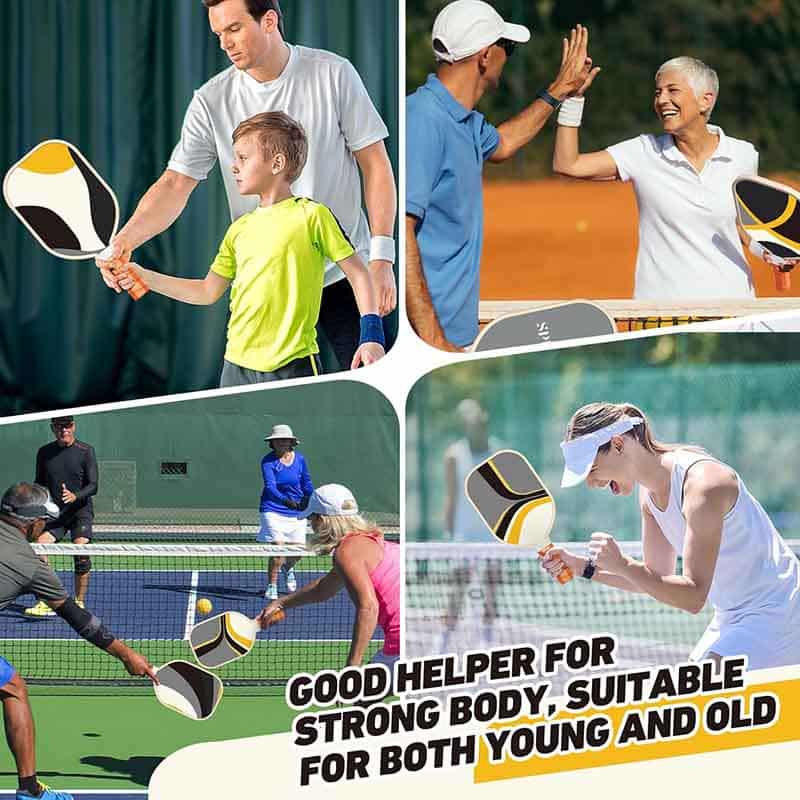Choosing the right pickleball paddle for you can be overwhelming, but don’t worry. In my opinion, our paddle experts have put together this “paddle guide” to help you learn about—and choose—a paddle that fits your unique preferences and play style.
In this guide we go over the 5 most important considerations when buying the right pickleball paddle:
1.Type
2.Shape
3.Grip
4.Weight
5.Spin

Pickleball Paddle Type
Every player is different, and to accommodate different playstyles, paddles come in different types. The biggest differentiation between paddles lies in how much power and control a paddle has. Below you can learn about each type to decide which will best suit you on your pickleball journey.
Control or “touch” paddles have a large, consistent sweet spot which helps players place the ball with more accuracy. Control paddles help to “slow the game down” by absorbing more energy and taking pace off of their opponents’ shots, but that limited power can make creating pressure through aggressive offense difficult.
Power paddles make it easy to hit with pace allowing those with shorter, more compact swings to generate additional speed. Players who already tend to hit the ball hard may enjoy the “extra boost” from power paddles. However, power paddles require precision and discipline to keep the ball inside the lines. Therefore, players who are just getting started on their pickleball journey might consider opting to start with a more forgiving paddle.
Paddles come in a variety of thicknesses ranging from 8-20mm, and it’s not uncommon to see two different thickeness options for the same paddle. There are some general rules of thumb for choosing the right thickness paddle for your game, but it’s important to keep in mind that there are some exceptions.
Thinner – Thinner paddles typically have more “pop” or rebound which is why many manufacturers will call their thinner options “power paddles”. They often have a smaller sweet spot and can be difficult to control if players are unable to find it regularly making them more common choices for advanced players.
Thicker – Thicker paddles tend to distribute force more evenly and make controlling the ball easier. They have a more even sweet spot across the face and slightly less rebound making shots more predictable. Players who want more forgiveness or are looking to improve their game often choose a thicker core paddle.

